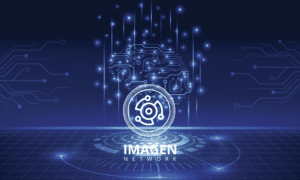Developing software is not a simple task; on the contrary, it is a fairly complex process that requires careful planning and execution to ensure the quality and success of the product.
To achieve this goal, a structured approach known as SDLC (Software Development Life Cycle) is commonly used. This includes different stages of software development, beginning with planning and ending with implementation and maintenance. A more detailed view of these stages is explored in the following sections.
What is the SDLC and what are its characteristics?
This is a work process that includes the stages and activities necessary to achieve the development of high-quality software. The goal is to ensure that the software meets all customer requirements and expectations, such as being delivered on time without delays and being easy to maintain and update.
The SDLC has many key features that make it an effective tool. Among the most important are the following:
- Structure: The SDLC is structured, with stages and activities that are well-defined from the start;
- Iterative: This is an iterative process. This means that changes and improvements can be made at each stage of the process;
- Collaborative: The SDLC promotes collaboration between team members in all areas and clients;
- Quality-focused: The SDLC aims to ensure high software quality at all stages of the process.
What are the stages of the SDLC?
This tool is composed of different stages, each of which is fundamentally important to achieving the objective and ensuring the success of the process.
1. Planning: This is the first stage, and it involves defining the scope of the project, identifying requirements, and setting goals. Then, a feasibility analysis is conducted and the project plan is outlined.
Finally, stakeholders are identified and expectations are described.
2. Requirements analysis: This is the stage where the software requirements are collected, then viewed and analyzed.
Stakeholder interviews are conducted and requirements are discussed. These requirements are documented, and use cases are designed;
3. Design: This is the stage where the software design is created. It is important to mention that at this stage of the process, the software architecture is decided upon, components are designed, prototypes are created, and usability evaluations are conducted.
4. Implementation: This is the stage where the software code is written. As you can imagine, the language used is specific to programming, following advanced coding practices. Evaluations are also carried out at this stage;
5. Testing: At this point in the process, software functions are tested to verify integration and use cases. This is also a good time for team members to identify and resolve bugs.
6. Implementation and Delivery: The objective of this stage is to configure the production environment and conduct performance evaluations. Delivery is made to the client and the necessary support is provided.
7. Maintenance: This is the final stage in the entire process, and at this point, the corresponding updates are implemented and any issues are resolved.
This requires collecting and analyzing feedback from clients or users, and, as a result, making any necessary changes and improvements.
Common SDLC models
The stages are constant, but execution may vary depending on the method chosen. There are different approaches known as models, and this can impact the success of a project.
Waterfall model
This is an old, linear model. Each stage closes its cycle when it’s complete, and this must happen before the next stage begins, starting with planning and ending with maintenance. When a phase is completed, there’s little room for control.
This method works best in environments that don’t change much, such as government contracts.
Agile model
Agile is a modern model that separates development into short stages. It doesn’t follow a strict sequence; instead, teams follow a process that includes planning, development, testing, and, finally, feedback.
What are the benefits of SDLC?
Implementing an SDLC provides clarity, consistency, and control across all software projects. Whether you’re working for a startup or a large, established company, choosing an SDLC framework helps teams avoid chaos and reduce risk.
One of the major advantages is that it allows for better planning and predictability, avoiding surprises and inconveniences and increasing teamwork between technical and non-technical people.
Using an SDLC improves product quality because errors can be detected early and corrected immediately, which increases code quality.
Another key benefit is risk mitigation. Having checkpoints throughout the process allows problems to be detected early and, consequently, the cost of resolving them is much lower. For firms working within regulatory frameworks, the SDLC provides a clear audit trail, facilitating compliance with standards and the necessary documentation.
Finally, an SDLC simplifies scalability and team growth. New members can be quickly incorporated, and existing groups can collaborate more effectively, allowing projects to advance and scale without losing quality.
The SDLC is much more than a set of stages; it’s a language capable of aligning teams and reducing risks when creating software.
In a completely digital world, choosing a reliable process for software planning and development isn’t an option; it’s essential. The SDLC adds transparency, foresight, and quality.
Each model can be tailored to a specific company’s culture or objectives.





























